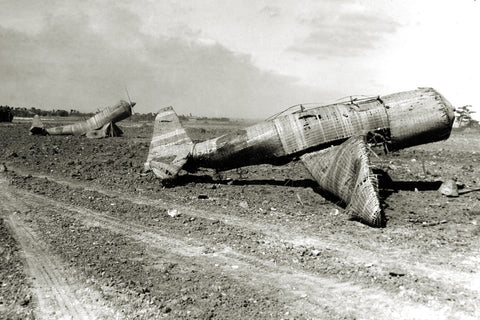
Japanese Ghost Plane
In World War II, all sides tricked the enemy with fake planes, tanks and artillery.
American politicians and media used the term “Phoney War” to describe the eerily calm, eight-month period following Britain and France’s Sept. 3, 1939, declaration of war on Nazi Germany __ as Western Europe grappled with how to respond to Hitler’s aggression. But it just as well could have referred to the many acts of visual deception performed by talented military artists during World War II.
American combat groups like the U.S. 23rd Headquarters Special Troops — the top-secret “Ghost Army” — produced tank, truck and artillery decoys, crafted from lightweight materials like plywood, rubber and canvas, to fool the enemy into thinking their fighting forces were larger, better-equipped and more widely dispersed than they actually were.
The Allies, however, weren’t the only ones engaged in such trickery. Look closely at the plane in the above photo, taken in April 1945 as American Tenth Army troops advanced on Okinawa. Perched on an airfield near Kadena, its fuselage and wings appear weighty but were actually woven from flimsy rattan by the Japanese. From a distance, these fake flyers looked just like the real thing — and undoubtedly hoodwinked plenty of enemy pilots into wasting their ammo.
